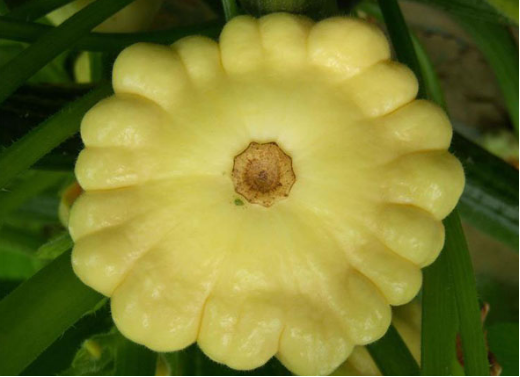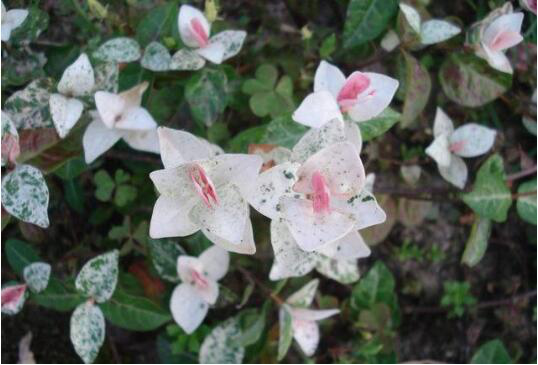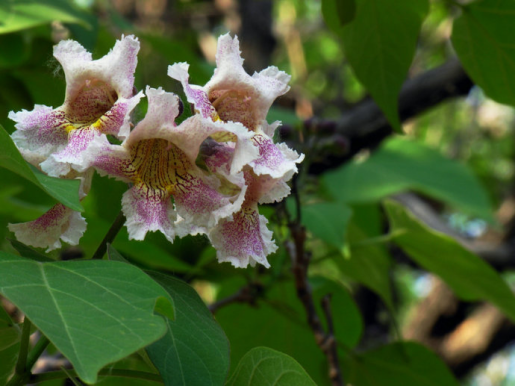The planting method of flying dish melon
Key points of cultivation
Flying saucer melon prefers warm environment, and the temperature suitable for its growth is generally 13 ℃ ~ 28 ℃. If the ambient temperature is more than 30 ℃, it will lead to melons. If the ambient temperature is lower than 10 ℃, the melons will stagnate. Flying saucer melons like light, so they can be adapted to both open field cultivation and protected cultivation.
Because of its large leaves and strong transpiration, flying saucer melon should pay special attention to water management in cultivation. Try to keep the air temperature at 70% and 80%. Otherwise, excessive humidity will lead to powdery mildew. The cultivated land should be cultivated in weakly acidic sandy loam and loam.
Raising seedlings
Choose full flying saucer melon seeds without disease and insect damage, and soak the seeds at a temperature of about 29 ℃ to accelerate germination. Keep the sprouting bag wet during the germination process, and change water once or twice a day. When more than half of the seeds sprout, they are sown on the sowing plate. After the seedlings are unearthed, cool down properly and transfer the seedlings to the seedling bowl. The seedling stage should maintain sufficient light, and the light time should be kept for about 10 hours a day. The temperature is managed by variable temperature.

Land preparation and planting
After the frost period, colonization was carried out when the minimum temperature was more than 10 ℃. Planting usually chooses border cultivation or ridge cultivation.
If the border is selected, the border spacing is about 40 cm, the width of the border is 1.2 meters, and the plant spacing is not more than 100 cm, 2 rows per row; if ridge cultivation is adopted, the ridge spacing is 70 cm, and the plant spacing is one meter, which needs to be determined according to the characteristics of the variety. Soil preparation before planting, remember to apply rotten organic fertilizer 4000-5000 kg, diammonium phosphate 30 kg, calcium superphosphate 50-5000 kg.
Field management
After planting slow seedlings, the flying saucer melon was watered once to increase the amount of water during the flowering and fruiting period. During the hot summer, it is watered twice a day. Topdressing once after slow seedling, full flowering stage and full fruit stage in the growing period.
To avoid grass shortage, shovel and loosen the soil two or three times before UFO melon blossoms to promote its root system development. And to achieve timely binding vines, remove old leaves, diseased leaves, in order to prevent waste of nutrients. At the same time, we should pay attention to the prevention and control of diseases and pests. Spray butyl EC on the leaves to kill aphids; secondly, whitefly can be controlled by paracetamol; if powdery mildew occurs, it is recommended to use strychnine spray to control.
The above is the UFO melon planting method introduced by Xiaobian for you. As long as you can take good care of UFO melon in these places, it will be enviable to ensure that your UFO melon will grow out!
The planting method of flying dish melon
Ecological habit
Flying saucer melon requires a particularly high ambient temperature. It is most suitable to grow at a temperature of 13 ℃-28 ℃. Once it is lower than 10 degrees, it will no longer grow. We should also pay attention to the humidity, moisture and soil of its growth.
Planting method to raise seedlings
Soak the selected seeds at a water temperature of 30 degrees Celsius for about ten hours. The seeds are then placed in a greenhouse at 28 degrees Celsius to germinate. Take good care of it and grow to a certain height and then transplant it outdoors.
Sowing seeds
To grow flying saucer melons, you need to first fertilize and plough the land, divide it bit by bit, each tree is about 70 centimeters apart, and then plant seedlings in the soil, and the best distance between each two seedlings is 100 centimeters.
Administration and Management
After the seedlings of flying saucer melon were transplanted, fertilizer and water were added to help the seedlings get better nutrients. At the same time, do a good job in daily management, clean up weeds and withered diseased leaves on time to ensure that the sun is fully illuminated and nutrients go directly to melons and fruits. The flowering period requires manual pollination. If you want to sit more fruit, you must not be lazy during this period of time.
Diseases and insect pests
Flying saucer melons are extremely vulnerable to aphids, and the preventive method is to spray butyl EC to kill insects; secondly, whitefly can be controlled by spray prolene; powdery mildew is recommended to be sprayed with trimethoprim.
Planting and raising seedlings of potted flying dish melon
Using potted plants, it can be planted when the plant expands 1-2 leaves.
Colonization
The diameter of the large basin required by the planting basin should be 40-50 cm, with nutritious soil inside. The formula of nutrient soil is: field soil, rotten livestock and poultry manure, sawed or rotten horse manure according to the proportion of 7:2:1. Plant a flying saucer melon in each pot and stand a frame with a height of one meter and a thickness of two to three centimeters. Pour enough water for planting. Keep the soil moist during the growing period. The pot should be placed in a well-ventilated and well-lit place to facilitate the growth of flying saucer melons.
Administration and Management
The soil needs to be kept moist. Note that for every 20 cm extension of the plant, it is necessary to tie the vine once. During the growing period, aphids and powdery mildew were mainly prevented. Pick the melon in time when it is ripe.
After reading the above introduction, you should know that flying saucer melons can be eaten raw, so go and have a try! But remember not to eat too much! At the same time, I also hope that the supplementary cultivation of potted flying dish melons will be useful to you! Thank you for reading!
- Prev

Matters needing attention in flower and leaf stone culture
1. Pruning. Huaye Luoshi is a foliage plant, if it wants to look good, it needs proper pruning and shaping, and proper pruning can also promote branching and long leaves, which is conducive to the growth of plant type. 2. Diseases and insect pests the main diseases in the process of mosaic stone growth are leaf spot and anthracnose.
- Next

Culture method of Catalpa chinensis
1. Basic knowledge of Catalpa cultivation growth soil: deep, fertile, moist soil. Humidity requirements: humidity should be kept between 68-79%. Temperature requirements: annual average temperature of 10-15 ℃ environment. Lighting requirements: plenty of sunlight. two。 Watering catalpa trees have very strict requirements on water quantity.
Related
- Fuxing push coffee new agricultural production and marketing class: lack of small-scale processing plants
- Jujube rice field leisure farm deep ploughing Yilan for five years to create a space for organic food and play
- Nongyu Farm-A trial of organic papaya for brave women with advanced technology
- Four points for attention in the prevention and control of diseases and insect pests of edible fungi
- How to add nutrient solution to Edible Fungi
- Is there any good way to control edible fungus mites?
- Open Inoculation Technology of Edible Fungi
- Is there any clever way to use fertilizer for edible fungus in winter?
- What agents are used to kill the pathogens of edible fungi in the mushroom shed?
- Rapid drying of Edible Fungi

